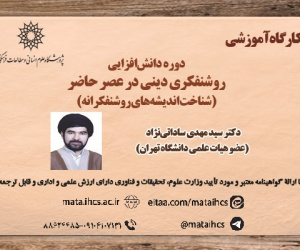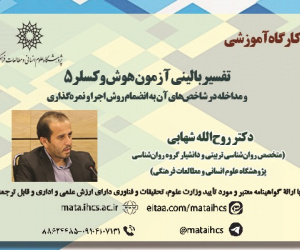دغدغه های اجتماعی نخستین زنان داستان نویسِ ایرانی (مورد مطالعه: دلشاد چنگیزی)
آرشیو
چکیده
زنان ایرانی از اواخر دوره قاجار سعی داشتند تا در مطبوعات نقش آفرینی کنند و علی رغم هجمه های بعضی از نیروهای بنیادگرا، به نوشتن ادامه دادند. آن ها از قدرت و نفوذ مطبوعات در میان توده مردم آگاه بودند و می خواستند با استفاده از این رسانه، دغدغه های اجتماعی خود را به منصه ظهور برسانند. این زنان با استفاده از قالب هایی چون مقاله انتقادی، شعر، داستان، ترجمه، و ... سعی در انجام این مهم داشتند. اما قالب داستان، که قالبی مدرن بود، توجه بسیاری از نویسندگان زن را به خود جلب کرد، به طوری که طبق آمارهای به دست آمده، قالب داستان دومین قالب پرطرفدار در میان زنانِ داستان نویس نسل اول بود. تا سال ۱۳۲۰، دلشاد چنگیزی نویسنده ای است که بیشترین تعداد داستان کوتاه را در میان زنان به خود اختصاص داده است. او، طی سیزده سال چاپ نشریه عالم نسوان، پنجاه داستان کوتاه نگاشت و در این نشریه به چاپ رساند. دلشاد چنگیزی در آثار خود به موضوعات اجتماعی زیادی پرداخته است. اما کدام یک از این موضوعات بیشترین بسامد را در آثار او دارند؟Social Concerns of the First Iranian Women Storytellers (Case Study: Delshad Changizi)
Iranian women have been striving to play a part in the press since the late Qajar period, and despite attacks from some fundamentalist forces, they continued to write. They were aware of the power and influence of the press among the masses and wanted to use this medium to bring their social concerns to light. These women attempted to achieve this important objective through various forms such as critical articles, poetry, stories, translations, and more. Nonetheless, the story format, which was a modern form, attracted the attention of many female writers to the extent that statistics show it was the second most popular format among the first-generation female storytellers. Up until 1941 (1320 in the Iranian calendar), Delshad Changizi was the writer who produced the most short stories among women. Over thirteen years of publishing the magazine Alef Nisan, she wrote fifty short stories that were published in this magazine. Delshad Changizi addressed many social issues in her works. But which of these issues has the highest frequency in her writings?







